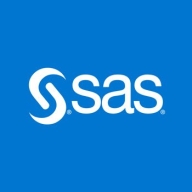

Find out what your peers are saying about BMC, Broadcom, Redwood Software and others in Workload Automation.
CA JCLCheck Workload Automation is used to validate and ensure the accuracy of JCL scripts, detecting errors and helping prevent job failures. It integrates seamlessly with mainframe environments to facilitate efficient and streamlined workflow management.
CA JCLCheck Workload Automation aids in reducing manual efforts and increasing job processing reliability. It is effective in error detection, syntax validation, and reporting. Users appreciate its ability to streamline job control language processes and its robust support for JCL standards. Ease of use and integration with existing systems are frequently mentioned as strengths. Nevertheless, customers report challenges with integration, unclear documentation, complex setup, and slow performance during large workloads. More intuitive error messages and better customer support are also highlighted as areas for improvement.
What are the important features of CA JCLCheck Workload Automation?CA JCLCheck Workload Automation is utilized in industries relying on mainframe environments where job accuracy and efficiency are paramount. It is critical in sectors like banking, insurance, and retail, where ensuring the reliability of transaction processing and batch jobs can have significant impacts on operational success.
SAS Workload Management optimizes resource allocation, streamlines workloads, and enhances operational efficiency with strong data processing capabilities and real-time monitoring, ensuring seamless task execution and balanced server loads.
Known for its robust scalability and efficient resource allocation, SAS Workload Management is designed to enhance performance and provide detailed analytics. Its real-time monitoring and comprehensive scheduling features support critical decision-making processes and reduce downtime. Businesses appreciate its ease of use and intuitive features, though some users note a need for better documentation and simpler configurations. Occasional slow performance and cumbersome initial setup are also mentioned, alongside desires for more intuitive reporting and improved automation capabilities. Complicated error messages and limited integration support present further challenges.
What are the key features of SAS Workload Management?Industries implementing SAS Workload Management include finance, healthcare, and retail to manage extensive data processing needs. Finance sectors use it to ensure compliance and risk management, healthcare organizations apply it for patient data handling and optimization, while retail businesses leverage it for inventory and customer data management, ensuring seamless operations across platforms.
We monitor all Workload Automation reviews to prevent fraudulent reviews and keep review quality high. We do not post reviews by company employees or direct competitors. We validate each review for authenticity via cross-reference with LinkedIn, and personal follow-up with the reviewer when necessary.